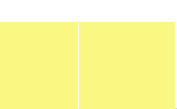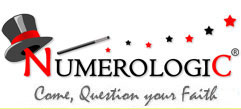|
Graphology /
Handwriting Analysis / Grapho-therapy
Graphology - the study of handwriting and handwriting analysis - is now an accepted and increasingly used technique for assessment of people in organizations. Handwriting analysis is an effective and reliable indicator of personality and
behaviour, and so is a useful tool for many organizational processes, for example: recruitment, interviewing and selection, team-building,
counseling, and career-planning.
Graphology Theory and History
A person's handwriting - the script - and its placing on the page express the unique impulses of the individual: logically, the brain sends signals along the muscles to the writing implement they control. By examining a handwriting sample, an expert graphologist is able to identify relevant features of the handwritten script, and the way the features interact. The features, and interaction between them, provide the information for the analysis. (No single handwriting sample will exhibit all 300 different features of course - a typical analysis will involve far less).
No single handwriting feature proves anything specific or absolute by itself; a single feature alone can only identify a trend. It is the combination of features, and the interaction between them that enable a full and clear interpretation.
Graphology is actually a very old and respected science - the study of handwriting and its analysis was first developed by the Chinese 3,000 years ago. The Romans used graphology, and through the centuries since then various civilisations and cultures have analysed handwriting to identify the essence of the person who produced it.
|
|
|
The modern approach to handwriting analysis was established by a group of French clerics, led by Abbe Michon, who defined key aspects of the science in the 1870s, after 30 years of study. This work formed the basis of modern graphology, although the science is still being researched and expanded today.
Professional graphologists operate to a strict code of ethics, and these experts are constantly in demand; those who use it recognise its value in the workplace as an additional method of understanding character. It is therefore an extremely useful tool in identifying the quality and capacity of an individual's talents and potential, particularly in career guidance and improving relationships. Like other powerful behavioural or intuitive models, it is not easy to explain how and why graphology works, nevertheless it continues to be used, respected and appreciated by many because it achieves a high level of results.
Graphology - an introductory guide to handwriting features
As previously stated there are around 300 features - this introductory article attempts to explain some of the basic ones that can be readily understood and which give interesting information.
slant
Right slant indicates a response to communication, but not how it takes place. For example, the writer may wish to be friendly, manipulative, responsive, intrusive, to sell, to control, to be loving, supportive, just to name some possibilities.
If the handwriting is generally upright, this indicates independence.
A left slant tendency shows emotion and reserve. This writer needs to be true to self first and foremost and can be resentful if others try to push for more commitment from them.
size
Handwriting is made up of three zones - or cases - middle, upper and lower. A basic average measure - or benchmark - by which size can be judged is 3mm per zone. This gives a benchmark for a non-remarkable full height of 9mm. More than this is large; less than this is small.
Large size handwriting can mean extravert and outgoing, or it can mean that the writer puts on an act of confidence, although this behaviour might not be exhibited to strangers.
Small size can, logically, mean the opposite. Small size handwriting can also indicate a thinker and an academic, depending upon other features in the script.
If the writing is small and delicate, the writer is unlikely to be a good communicator with anyone other than those on their own particular wavelength. These people do not generally find it easy to break new ground socially.
more
|



